Saturday, February 5, 2022 - Starbucks
- Mary Reed

- Feb 5, 2022
- 13 min read
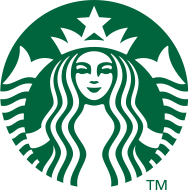
I just returned from a 3-day stay with my friends Anita and Bruce in Tyler. Our tickets to “Beautiful,” the Carole King musical, got cancelled because of the winter storm, but it was great to catch up with my friends. They LOVE Starbucks. It is their daily treat to themselves. I have several friends who really like Starbucks a lot. Because the stores are so plentiful, it is easy to find one close to you. The baristas are usually friendly and accommodating. There is an app where you can order ahead of time and skip the line. A lot of my friends really like the taste of the coffee. But there are a couple who think it has a bitter taste and won’t drink it. Because I am not a coffee drinker, I can’t really throw my support one way or the other, but I am fond of Starbucks’ chai latte and hot chocolate. I did a blog post on mermaids, and Starbucks logo is a mermaid. What’s not to like? Let’s learn more about Starbucks.

According to Wikipedia, Starbucks Corp. is an American multinational chain of coffeehouses and roastery reserves headquartered in Seattle, Washington. It is the world's largest coffeehouse chain.
As of November 2021, the company had 33,833 stores in 80 countries, 15,444 of which were located in the United States. Out of Starbucks' U.S.-based stores, over 8,900 are company-operated, while the remainder are licensed.
The rise of the second wave of coffee culture is generally attributed to Starbucks, which introduced a wider variety of coffee experiences. Starbucks serves hot and cold drinks, whole-bean coffee, micro-ground instant coffee, espresso, caffe latte, full and loose-leaf teas, juices, Frappuccino beverages, pastries and snacks. Some offerings are seasonal or specific to the locality of the store. Depending on the country, most locations provide free Wi-Fi internet access.
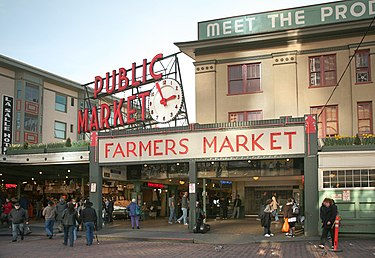
Company overview
Starbucks was founded in 1971 by Jerry Baldwin, Zev Siegl and Gordon Bowker at Seattle's Pike Place Market. During the early 1980s, they sold the company to Howard Schultz who — after a business trip to Milan, Italy — decided to convert the coffee bean store into a coffeeshop serving espresso-based drinks. As chief executive officer from 1986 to 2000, Schultz's first tenure led to an aggressive expansion of the franchise, first in Seattle, then across the West Coast of the United States. Schultz was succeeded by Orin Smith who ran the company for five years and positioned Starbucks as a large player in fair trade coffee, increasing sales to $5 billion. Jim Donald served as chief executive officer from 2005 to 2008, orchestrating a large-scale earnings expansion. Schultz returned as CEO during the financial crisis of 2007–08 and spent the succeeding decade growing the company's market share, expanding its offerings and reorienting the brand around corporate social responsibility. Kevin Johnson, the current CEO, succeeded Schultz in 2017.

In addition to drinks and food, many stores carry Starbucks' official merchandise, such as mugs, tumblers, scoops and coffee presses. There are also several select "Starbucks Evenings" locations that offer beer, wine and appetizers. Starbucks-brand coffee, ice cream and bottled cold coffee drinks are sold at grocery stores in the United States and other countries. In 2010, the company began its Starbucks Reserve program for single-origin coffees and high-end coffee shops. It planned to open 1,000 Reserve coffee shops by the end of 2017. Starbucks operates six roasteries with tasting rooms and 43 coffee bars as part of the program. The latest roastery location opened on Chicago's Magnificent Mile in November 2019 and is the world's largest Starbucks location. The company has been subject to multiple controversies related to its business practices. Conversely, its franchise has commanded substantial brand loyalty, market share and company value.
The company is ranked 114th on the Fortune 500 and 288th on the Forbes Global 2000.
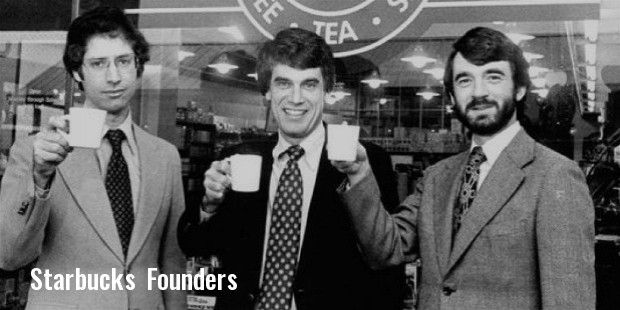
History
1970s
Starbucks originally opened in Seattle, Washington, on March 30, 1971. It was founded by business partners Jerry Baldwin, Zev Siegl and Gordon Bowker who first met as students at the University of San Francisco. The trio were inspired to sell high-quality coffee beans and equipment by coffee roasting entrepreneur Alfred Peet. Bowker recalls that a business partner of his, Terry Heckler, thought words beginning with the letters "st" were powerful, leading the founders to create a list of words beginning with "st," hoping to find a brand name. They chose "Starbo," a mining town in the Cascade Range and from there, the group remembered "Starbuck," the name of the chief mate in the book “Moby-Dick.” Bowker said, "Moby-Dick didn't have anything to do with Starbucks directly; it was only coincidental that the sound seemed to make sense."

The first Starbucks store was located in Seattle at 2000 Western Ave. from 1971 to 1976. They later moved the café to 1912 Pike Place. During this time, Starbucks stores sold just coffee beans and not drinks. In its first two years of operation, Starbucks purchased green coffee beans from Peet's Coffee & Tea. In 1973, Alfred Peet stopped supplying Starbucks and helped train their new roastmaster, Jim Reynolds.

1980s
In 1984, the original owners of Starbucks, led by Jerry Baldwin, purchased Peet's Coffee. By 1986, the company operated six stores in Seattle and had only just begun to sell espresso coffee. In 1987, the original owners sold the Starbucks chain to former director of marketing Howard Schultz, who rebranded his Il Giornale coffee outlets as Starbucks and quickly began to expand the company. Also in 1987, Starbucks opened its first locations outside of Seattle in Waterfront Station in Vancouver, British Columbia, and Chicago, Illinois. By 1989, 46 Starbucks stores existed across the Pacific Northwest and Midwest, and the company was roasting more than 2 million pounds of coffee annually.

1990s
In June 1992, at the time of its initial public offering, Starbucks had 140 outlets, with revenue of $73.5 million, up from US$1.3 million in 1987. The company's market value was $271 million by this time. The 12% portion of the company that was sold raised around $25 million for the company, which enabled it to double its number of stores over the next two years. By September 1992, Starbucks's share price had risen by 70%.
In 1994, Starbucks acquired The Coffee Connection, gaining the rights to use, make, market and sell the "Frappuccino" beverage. The beverage was introduced under the Starbucks name in 1995 and by 2012, Starbucks had annual Frappuccino sales of over $2 billion.
In 1999, Starbucks experimented with eateries in the San Francisco Bay Area through a restaurant chain called Circadia. After people learned that these restaurants were owned by Starbucks, Starbucks converted the restaurants to Starbucks cafés.
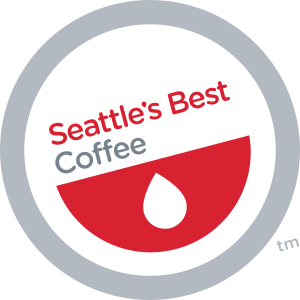
2000s
In April 2003, Starbucks acquired Seattle's Best Coffee and Torrefazione Italia from AFC Enterprises for $72 million. The deal only gained 150 stores for Starbucks, but according to the Seattle Post-Intelligencer, the wholesale business was more significant.
From 2005 to 2007, Howard Behar served as president of Starbucks North America.
In September 2006, rival Diedrich Coffee announced that it would sell most of its company-owned retail stores to Starbucks, including most locations of Oregon-based Coffee People, escalating regional coffee wars. Starbucks converted the Diedrich Coffee and Coffee People locations to Starbucks. The Coffee People locations at Portland International Airport were excluded from the sale.

In early 2008, Starbucks started a community website, My Starbucks Idea, designed to collect suggestions and feedback from customers. Other users could comment and vote on suggestions. Journalist Jack Schofield noted that "My Starbucks seems to be all sweetness and light at the moment, which I don't think is possible without quite a lot of censorship."
In March 2008, Starbucks acquired Coffee Equipment Company, which was the manufacturer of the Clover Brewing System. It began testing the "fresh-pressed" coffee system at several Starbucks locations in Seattle, California, New York and Boston.
In July 2008, during the Great Recession, Starbucks announced it was closing 600 underperforming company-owned stores and cutting U.S. expansion plans amid growing economic uncertainty. On July 29, 2008, Starbucks also cut almost 1,000 non-retail jobs as part of its bid to re-energize the brand and boost its profit. Of the new cuts, 550 of the positions were layoffs and the rest were unfilled jobs.

Additionally in July 2008, Starbucks announced that it would close 61 of its 84 stores in Australia in the following month. Nick Wailes, an expert in strategic management of the University of Sydney, commented that "Starbucks failed to truly understand Australia's café culture."
In January 2009, Starbucks announced the closure of an additional 300 underperforming stores and the elimination of 7,000 positions. CEO Howard Schultz also announced that he had received board approval to reduce his salary. Altogether, from February 2008 to January 2009, Starbucks terminated an estimated 18,400 U.S. jobs and began closing 977 stores worldwide.
In August 2009, Ahold announced closures and rebranding for 43 of its licensed store Starbucks kiosks for their U.S.-based Stop & Shop and Giant supermarkets.
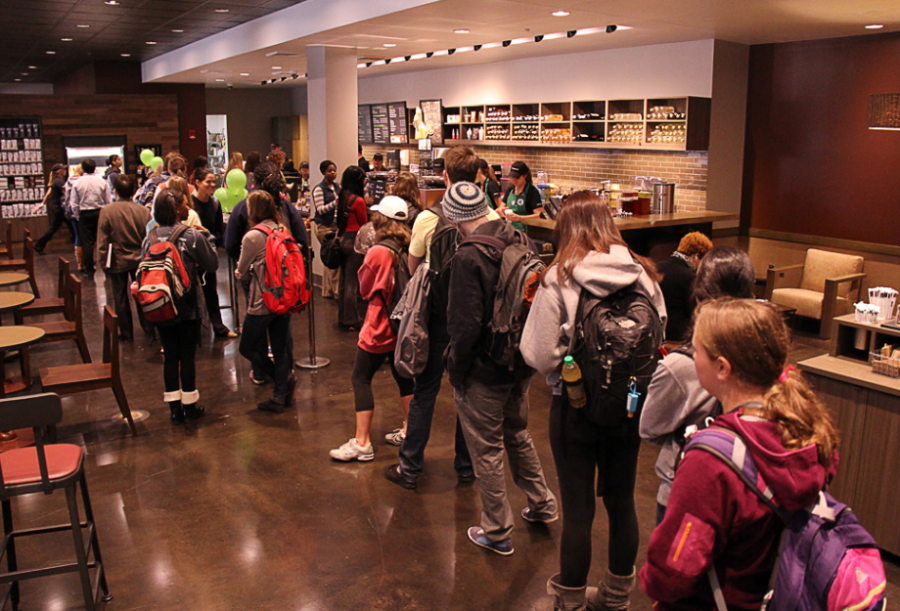
2010s
In August 2012, the largest Starbucks in the US opened at the University of Alabama's Ferguson Centre.
On June 25, 2013, Starbucks began to post calorie counts on menus for drinks and pastries in all of its U.S. stores.
In July 2013, more than 10% of in-store purchases were made on customers' mobile devices via the Starbucks app.
The company once again utilized the mobile platform when it launched the "Tweet-a-Coffee" promotion in October 2013. On this occasion, the promotion also involved Twitter and customers were able to purchase a $5 gift card for a friend by entering both "@tweetacoffee" and the friend's handle in a tweet. Research firm Keyhole monitored the progress of the campaign; a December 2013 media article reported that 27,000 people had participated and $180,000 of purchases had been made to date.
In January 2014, as part of a change in compact direction, Starbucks management transitioned from a singular brand worldwide to focusing on locally relevant design for each store.
In May 2014, Starbucks announced ongoing losses in the Australian market, which resulted in all remaining stores being sold to the Withers Group.
In July 2017, Starbucks acquired the remaining 50% stake in its Chinese venture from long-term joint venture partners Uni-President Enterprises Corp. and President Chain Store Corp. for $1.3 billion.

On March 21, 2018, Starbucks announced that it was considering the use of blockchain technology with an idea to connect coffee drinkers with coffee farmers who eventually can take advantage of new financial opportunities. The pilot program was planned to start with farmers in Costa Rica, Colombia and Rwanda in order to develop a new way to track the bean-to-cup journey. In 2019, at the Microsoft Build conference, the coffee company formally announced its "bean-to-cup" program using the Microsoft's Azure-based blockchain service.
Two men were arrested in a Philadelphia Starbucks location after a manager claimed the two were trespassing on April 12, 2018. The arrests led to protests due to their apparently racially motivated nature. CEO Kevin Johnson later apologized for the incident, and the company declined to press charges. During the company's second quarter earnings call on April 26, Johnson indicated that the company had not seen a drop in sales as a result of the event and subsequent coverage. The company reiterated its guidance for full year earnings and beat consensus expectations of 1.8% same-store sales growth with 2% growth.
Johnson announced that the company would close some 8,000 locations on May 29 for a seminar about racial bias in order to prevent future events similar to those that occurred in Philadelphia.
On June 19, 2018, Starbucks announced the closing of 150 locations in 2019 — three times the number the corporation typically closes in a single year. The closings were to happen in urban areas that already have dense clusters of stores.
In July 2019, Starbucks announced that it would no longer be selling newspapers in its cafés. It was also announced that kiosks for grab-and-go snacks and bags of whole-bean coffee would be removed from stores beginning in September 2019.
In November 2019, Starbucks opened its largest store ever on Michigan Avenue in Chicago with 200 employees.
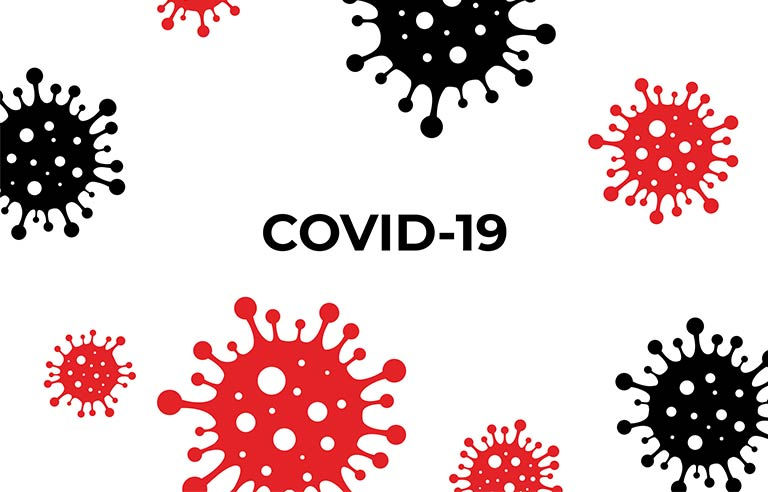
2020s
On March 20, 2020, due to the COVID-19 pandemic, Starbucks closed all the café-only stores in the United States for two weeks. During that time, only drive-thru and delivery-only services were to function. According to the company representatives, all workers were to be paid for the next 30 days whether they went to work or stayed home. COVID-19 lockdowns caused Starbucks to suffer a general 10% sales decrease and a 50% decrease in China where quarantine measures were especially strict.
In May 2020, the company asked for reduced rent from landlords due to the decrease in sales.
In June 2020, during the COVID-19 pandemic in the United States, the company announced that it would close 400 of its locations in the U.S./Canada region over the subsequent 18 months as it moves from the coffee house concept to what it calls "convenience-led" formats with drive-through and curbside pickup. Starbucks announced that it planned to open 300 stores that will primarily focus on carryout and pickup orders. The new stores will work with the Starbucks mobile app for pre-payment by the customer before arrival to pick up the order. The layout of some stores will also be modified with a separate counter for picking up mobile orders.
In December 2020, Starbucks announced that it is planning to increase its store count to about 55,000 by 2030, up from roughly 33,000.
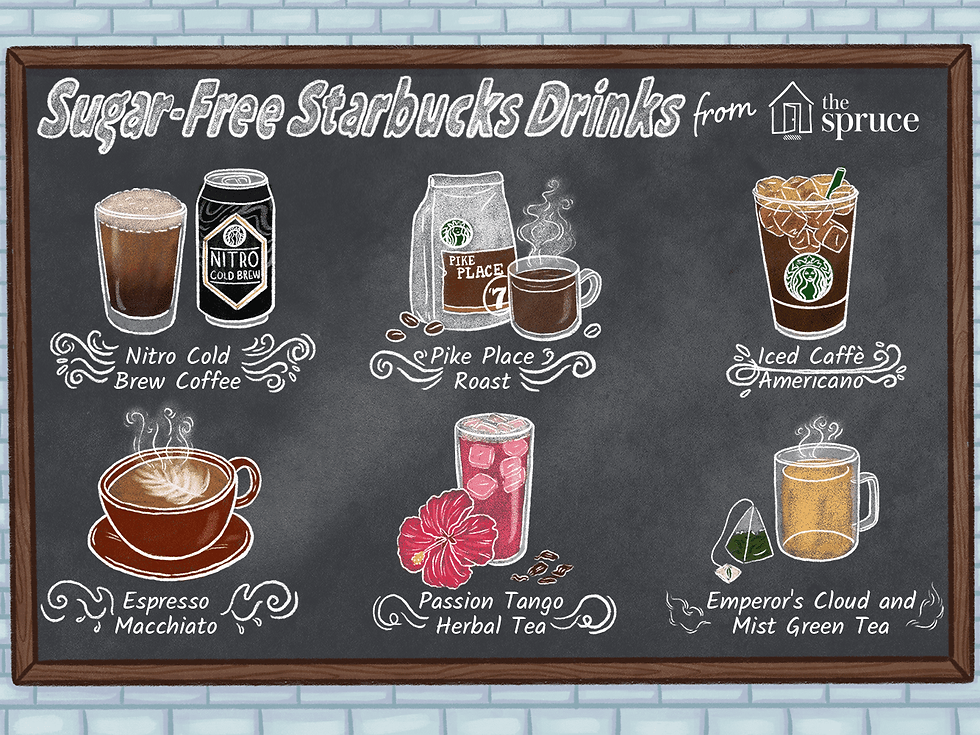
Low calorie and sugar-free products
In January 2008, Starbucks began a "skinny" line of drinks, offering lower-calorie and sugar-free versions of the company's offered drinks that use skim milk and can be sweetened by a choice of natural sweeteners (such as raw sugar, agave syrup or honey), artificial sweeteners (such as Sweet'N Low, Splenda or Equal) or one of the company's sugar-free syrup flavors.
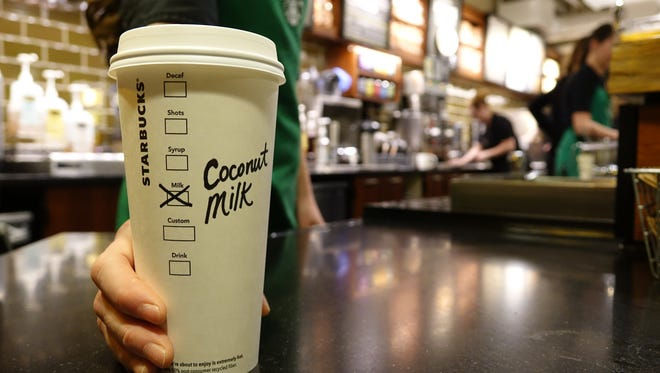
Non-dairy milk offerings
In 1997, Starbucks first offered non-dairy milk at its U.S. stores with the introduction of soy milk.
In 2007, Starbucks stopped using milk originating from rBGH-treated cows. In June 2009, the company began to sell salads and baked goods without high fructose corn syrup or artificial ingredients. This move was expected to attract health- and cost-conscious consumers and prices.
In 2015, Starbucks began serving coconut milk. In 2016, it began serving almond milk. In January 2020, oat milk became available nationally. The company also offers non-dairy creamers at retail in partnership with Nestle SA.
CEO Kevin Johnson said in a 2020 interview that, milk substitutes will be a big part of reducing carbon emissions. That effort has prompted vegans, environmentalists, people with lactose intolerance and others to urge the company to eliminate the upcharge for drinks made with dairy-free milk. PETA encouraged sit-ins at Starbucks locations and purchased Starbucks stock to draw attention to what they believe is an unfair charge. A Starbucks Canada spokesperson told ET Canada that customizations such as added flavors, non-dairy beverages or an additional shot of espresso will incur an additional charge.
In December 2020, Starbucks announced it will offer Oatly oat milk in all US stores starting in spring 2021.
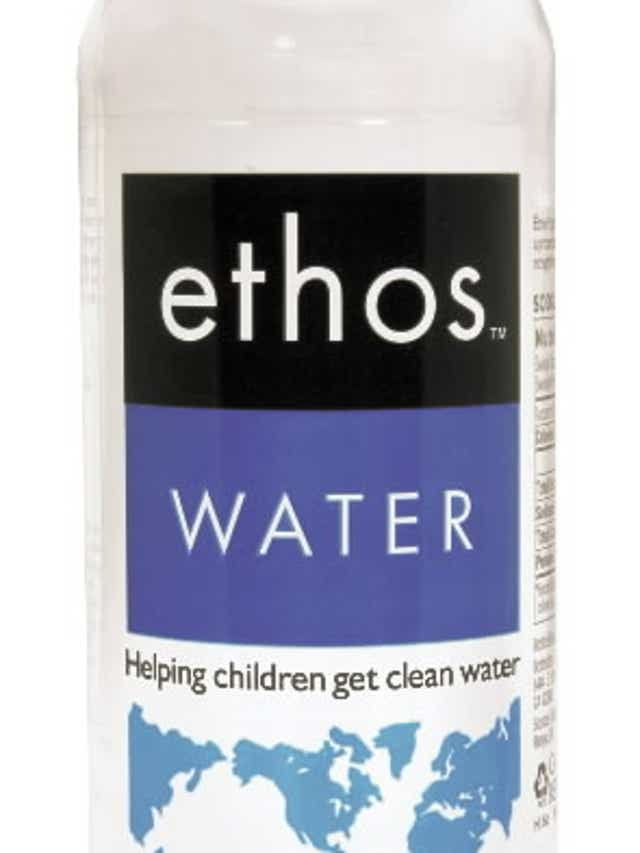
Ethos water
Ethos water, a brand of bottled water acquired by Starbucks in 2003, is sold at locations throughout North America. Ethos bottles feature prominent labeling stating "helping children get clean water," referring to the fact that $0.05 from each $1.80 bottle sold — $0.10 per bottle in Canada — is used to fund clean water projects in underdeveloped areas. Although sales of Ethos water have raised over $6.2 million for clean water efforts, the brand is not incorporated as a charity. Critics have argued that the claim on the label misleads consumers into thinking that Ethos is primarily a charitable organization when it is actually a for-profit brand and only 5 cents per bottle supports clean-water projects. The founders of Ethos have stated that the brand is intended to raise awareness of third-world clean water issues and provide socially responsible consumers with an opportunity to support the cause by choosing Ethos over other brands. Starbucks has since redesigned the American version of the Ethos water bottles, stating the amount of money donated per bottle in the description.

Instant coffee and coffee capsules
In March 2009, Starbucks introduced a line of instant coffee packets, called VIA "Ready Brew." It was first unveiled in New York City with subsequent testing of the product also in Seattle, Chicago and London. The first two VIA flavors include Italian Roast and Colombia, which were then rolled out in October 2009, across the U.S. and Canada with Starbucks stores promoting the product with a blind "taste challenge" of the instant versus fresh roast, in which many people could not tell the difference between the instant and freshly brewed coffee. Financial analysts speculated that by introducing instant coffee, Starbucks would devalue its own brand.

Coffeemakers and single use capsules
In September 2012, Starbucks announced plans to introduce the Verismo, a consumer-grade single-serve coffee machine that uses sealed plastic cups of coffee grounds and a "milk pod" for lattes.
In November 2012, Starbucks Verismo became publicly available, consisting of a line of coffee makers that brew espresso and regular chocolate from coffee capsules, a type of pre-apportioned single-use container of ground coffee and flavorings utilizing the K-Fee pod system.
In a brief review of the 580 model, Consumer Reports described the results of a comparative test of the Verismo 580 against two competitive brands: "Because you have to conduct a rinse cycle between each cup, the Verismo wasn't among the most convenient of single-serve machines in our coffeemaker tests. Other machines we've tested have more flexibility in adjusting brew-strength; the Verismo has buttons for coffee, espresso and latte with no strength variation for any type. And since Starbucks has limited its coffee selection to its own brand, there are only eight varieties so far plus a milk pod for the latte."
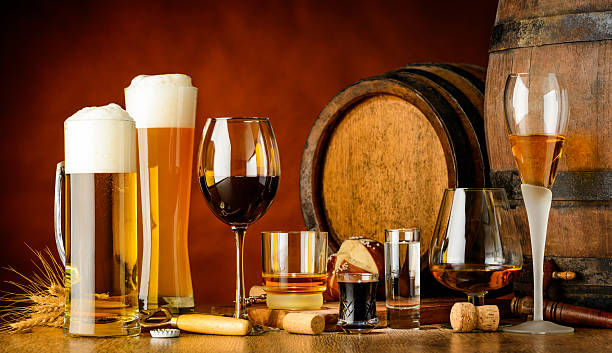
Alcoholic drinks
In 2010, Starbucks began selling alcoholic beverages at some stores in the United States. In August 2014, Starbucks opened its first store in Williamsburg, Brooklyn which by then was among 30 locations serving beer and wine.
In 2016, three locations within Toronto, Ontario also announced they were going to serve alcohol, including upscale appetizers like bacon-wrapped dates and truffle mac and cheese.
Starbucks ensures that the selected locations that serve alcohol are able to accommodate the community, as well as have the space for extra seating and storage.

Fruit juices, fruit beverages and sodas
On November 10, 2011, Starbucks acquired juice company Evolution Fresh for $30 million in cash and planned to start a chain of juice bars starting in around the middle of 2012, venturing into territory staked out by Jamba Inc. Its first store released in San Bernardino, California and plans for a store in San Francisco were to be launched in early 2013.
In March 2012, Starbucks began selling a line of iced Starbucks Refresher beverages that contain a green coffee extract. The beverages are fruit-flavored and contain caffeine, but are advertised as having no coffee flavor. Starbucks's green coffee extraction process involves soaking the beans in water.
In June 2014, Starbucks began trialing its own line of carbonated sodas, dubbed "Fizzio." The drinks required a special machine to make.

Energy drinks
In January 2022, Starbucks launched a line of canned energy drinks called "Baya." The drink contains caffeine from the coffee fruit.

Seasonal cups
Each year between November and January, Starbucks releases new holiday merchandise, including new paper cups with various festive designs.

Barrel-aged coffee
In March 2017, Starbucks announced the launch of two new limited-edition specialty drinks made from beans aged in whiskey barrels at its Seattle roastery. Starbucks's barrel-aged coffee will be sold with a small batch of unroasted Starbucks Reserve Sulawesi beans, which are then hand-scooped into whiskey barrels from Washington state.

Starbucks card and loyalty program
In May 2008, a loyalty program was introduced for registered users of the Starbucks card — previously simply a gift card — offering perks such as free Wi-Fi Internet access, no charge for soy milk and flavored syrups and free refills on brewed drip coffee, iced coffee or tea. Each time a customer purchases a drink, they will earn stars if they present their rewards card or scan their card from the mobile app. Eventually, these stars accumulate to allow customers to redeem for perks such as free drinks, free add-ins, free bakery items or selected merchandise.
In 2009, Starbucks began beta testing its mobile app for the Starbucks card, a stored value system in which consumers access pre-paid funds to purchase products at Starbucks. Starbucks released its complete mobile platform in January 2011. By December 2011, the number of mobile transactions exceeded 26 million.




Comments